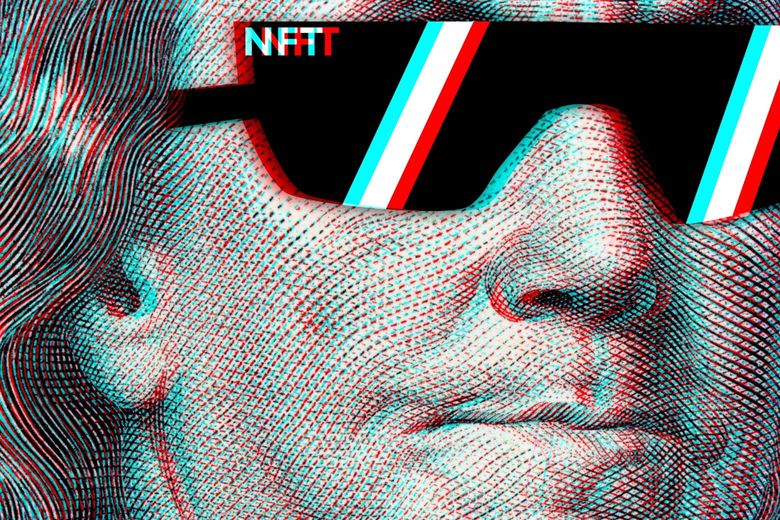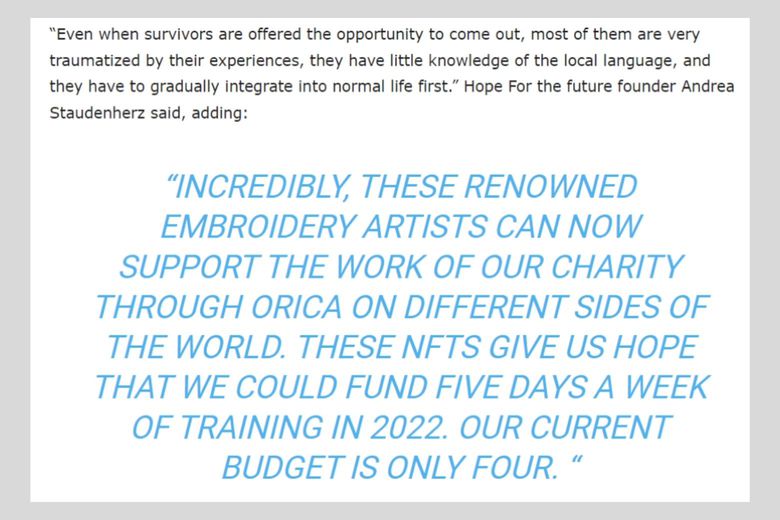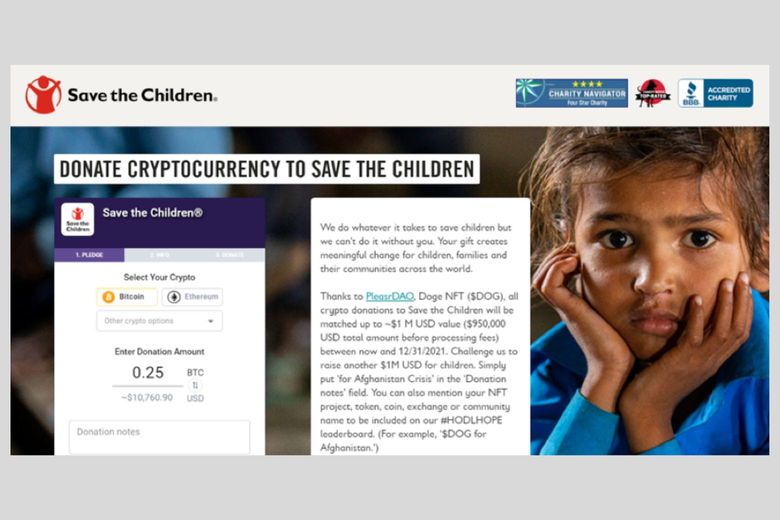
Vimal Patel27/01/22
7 min read

The time is right for the charity sector to embrace the world of digital innovation.
After a couple of years of tackling unprecedented challenges, taking stock and adopting digital transformation, 2022 is the year of opportunity.
And new avenues are appearing rapidly across the online and virtual spaces - avenues far beyond the 'traditional' realm of charity web development.
The metaverse, NFTs, cryptocurrency, social commerce, Progressive Web Apps - all these, and much more, are terms being regularly used across the existing world wide web infrastructure, and what has become known as Web3.
Web3 - or web 3.0 - is described on Wikipedia as ‘an idea for a new iteration of the world wide web based on blockchains, which incorporates concepts including decentralisation and token-based economics.

It is being developed in part, some analysts say, to remove what is seen as an over-reliance on the big tech firms, Alphabet (previously Google), Meta (previously Facebook), Amazon and Apple.
The idea of removing the need for banks, search engines or social media platforms might seem far-fetched at present, and pragmatists are suggesting that Web3 elements will likely run alongside the Web 2.0 we all know for many years.
While scepticism is strong around complete decentralisation, there can be little argument that some elements of Web3 are taking hold - and the question for innovative charities in 2022 is how to take advantage of these.
Across the world, we’re seeing stories which provide some of the answers: charities receiving cryptocurrency donations and benefiting from NFTs.
In our latest content series, we’ll be guiding you through what all of this means and, most importantly, what you can be doing to put your charity at the front of the innovation queue. Here’s a summary of the big opportunities in 2022 and beyond.

Potentially one of the biggest changes to the way we all live is the metaverse. Playing, working, socialising in a virtual world has previously been the stuff of science fiction books and movies. Read Ready Player One; watch The Matrix.
But the metaverse is no longer a fictional, futuristic concept. It’s already here and contains some big names.
But what actually is the metaverse? In ultra simplistic terms, it’s taking anything physical and making it virtual. But there will be no limitations; anything will be virtually possible. And so we’ll need to suspend our beliefs and let our imaginations run wild to get the most from this new world.
To take a look at how the early beginnings of the metaverse are taking shape, you can head over to websites such as Decentraland or The Sandbox, set up an account and have a browse.

What you’ll see there is only a fraction of the complete metaverse experience. To truly immerse yourself you’ll need to don a virtual reality headset and begin your adventure. The best VR headset on the market is widely recognised as Meta’s Oculus Quest, but such products are still a bit bulky and uncomfortable.
Many experts are predicting that VR will take off among the masses when high-tech glasses are able to replicate what the headsets are doing right now.
As yet, charities haven’t made the leap into the metaverse themselves. Events are being organised to support some, with NFTs created and cryptocurrency donations being made - but who’s going to be the third-sector innovators?
While planting a flag in the metaverse matrix may not be for you yet, NFTs are something charities can certainly be planning for - and they can be generating a new income stream right now.

So, what are NFTs? They’re non-fungible tokens; virtual items which are unique, and which can be created and sold using cryptocurrency - and nothing is off limits. Digital art is the most popular form right now, and there’s already a burgeoning catalogue of examples where NFTs have been sold to raise funds for charities.
The very first tweet, created by Twitter founder Jack Dorsey, was auctioned off and made nearly $3million. This was converted to bitcoin and donated to GiveDirectly, to use for the charity’s covid-19 response in Africa.
Three embroidery artists created NFTs at the end of 2021 to raise money for Austrian charity Hope for the Future. The proceeds went to helping victims of human trafficking find jobs. The charity’s founder, Andrea Staudenherz, is hoping that NFTs can fund extra training.

Another NFT auction was held at the end of 2021 to help American charity Blankets of Hope, which teaches kindness in schools and distributes blankets to the homeless, while new organisation, Binance Charity, has created a platform called NFT for Good, allowing individuals to convert their work to support good causes.
An NFT can be anything digital - jpegs of art, video clips, tweets, documents. Since they are created and run on blockchain technology, a decentralised digital ledger that documents transactions, ownership and validity of each can be tracked.
While a few keen advocates are taking the plunge and using contacts to create these NFT auctions, the next step is for charities themselves to consider how to benefit. We’ll be giving you some ideas in our special NFT feature, but some obvious ones jump out:
All the signs are that NFTs will grow in popularity, offering charities crucial fresh income and a new way to connect with millennials and Gen Z.
While NFTs offer something radically different, they pose one big challenge: how charities can accept and manage cryptocurrency.
So, what is cryptocurrency? It’s been around since the 1980s but people began taking serious notice when Bitcoin hit the market in 2009. A cryptocurrency is a digital equivalent to money, built using blockchain technology. Records of ownership are stored in a digital ledger rather than through the more traditional banking system.
There are numerous types of cryptocurrency - with more coming - and their value can be quite volatile. But, just as with NFTs, they’re now part of the new digital infrastructure and will become more mainstream as time moves on. There are rumours that both Amazon and Meta will be introducing their own cryptocurrencies soon.
For charities, entering the world of cryptocurrencies could be seen as a bit of a headache. Firstly, there’s the challenge of accepting donations - or proceeds from an NFT auction - because you can’t just transfer them into your charity’s bank account; and secondly, if you set up to receive them, what actual use are they?
Help is on hand. An American platform, called The Giving Block, has been created to help charities accept and process cryptocurrencies. Save the Children is one of the bigger charities to be using the service, accepting donations directly.

Cryptocurrencies represent another largely untapped opportunity for charities in 2022 and if you’re thinking that they’re the preserve of only a minority of people, then think again. There were nearly 10million crypto owners in the UK in February 2021, so that surely should make charities sit up and take notice.
While NFTs and cryptocurrencies are creating a buzz, there has been a significant amount of concern voiced over their environmental impact.
Basically, some cryptocurrencies use a large amount of energy - particularly the more popular ones such as Bitcoin and Ethereum - and critics warn of their impact on climate change. Artists are attempting to force improvements in this area and encourage collectors to use more eco-friendly alternative platforms.
The WWF has come in for some criticism for its use of Ethereum in an NFT drop, but the charity has responded by saying it is using a greener version of the currency.
This whole concept is still in its infancy and it is hard to believe that such technology won’t adapt and improve over time - and probably in a short space of time.
One of the most interesting developments is in the world of e-commerce. Many charities now operate an online shop to generate income, but a new concept is ready to make big waves in 2022. Social commerce has been big in China for years and the major platforms have been testing how to operate it in the UK.
So, what is social commerce? Essentially, it’s allowing people to buy products directly from their social media feeds, without the need to click through to a website.
This will require some technical support when setting up shops and product feeds on platforms such as Instagram and TikTok, and some serious social media influencer collaborations.
The main tactic for social commerce is something called live shopping - a mix of content creation, entertainment, product placement and sales. The Chinese stars getting this right are driving billions in revenue, and there’s already been a few test events in the UK.
This presents opportunities for charities. They could work with influencers to add their products to a live shopping event, or could partner with their new-age ambassadors to collect a percentage of income generated for such experiences.

One other area which could be of interest to charities is PWAs, or Progressive Web Apps. Uber, Twitter and Instagram are just some of the big names making use of this relatively new technology.
So, what are PWAs? They are applications which can be added to your smartphone but without having to go through official app stores. They can operate offline thanks to using caching technology and so function even without being connected to the internet.
While not necessarily useful for public-facing purposes, PWAs could be useful for charity teams and volunteers who are out in the field and need to input data into a bespoke system or draw on content, especially in remote areas where connection might be poor.
Maybe volunteers want to display memory-heavy information to beneficiaries when out on a field trip, or a member of your team needs system access when conducting a study in a remote part of the world - then a PWA could handle that.
If 2020 was the year of remote set-up, and 2021 was the year of adjusting to deeper digitisation, then 2022 is the year of opportunity.
The benefits of working in the cloud, digital marketing, online fund-raising and more are well documented, and charities are well practised in such activities.
Now it’s time to push on. Plan the progressive next steps. Innovate or stand still.
Whether it’s considering NFTs and cryptocurrency, or social commerce and the metaverse, charities should be exploring new opportunities and be planning for an ambitious digital future.